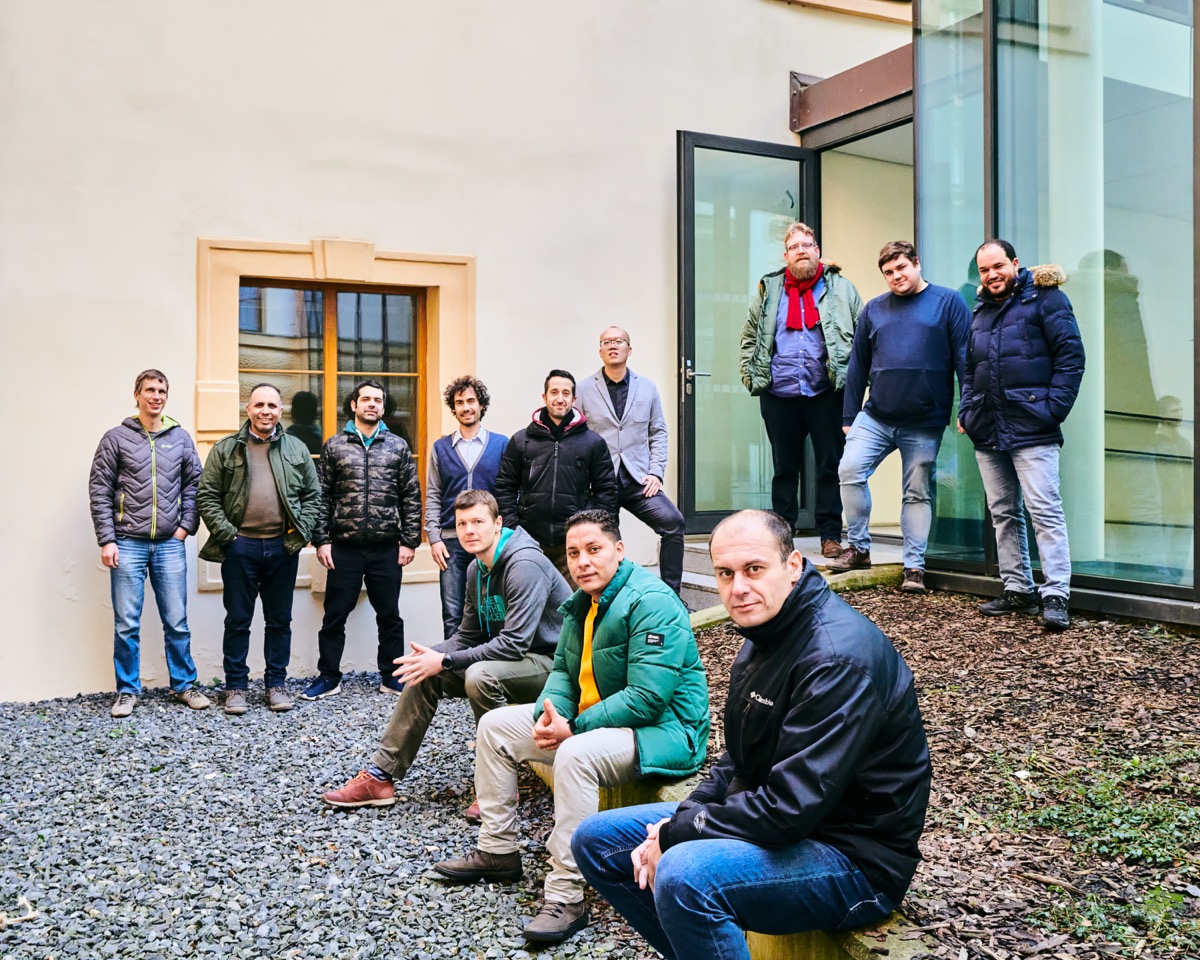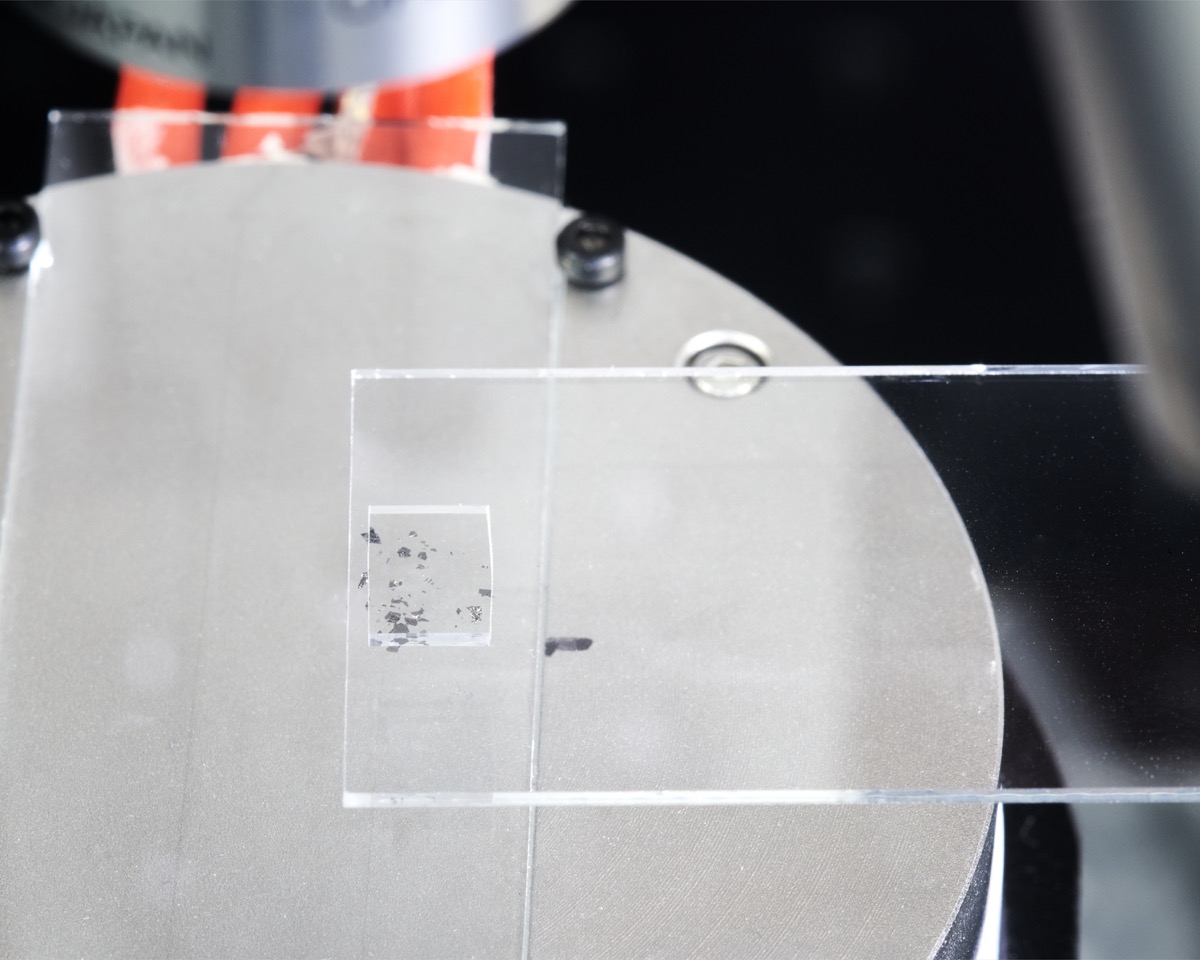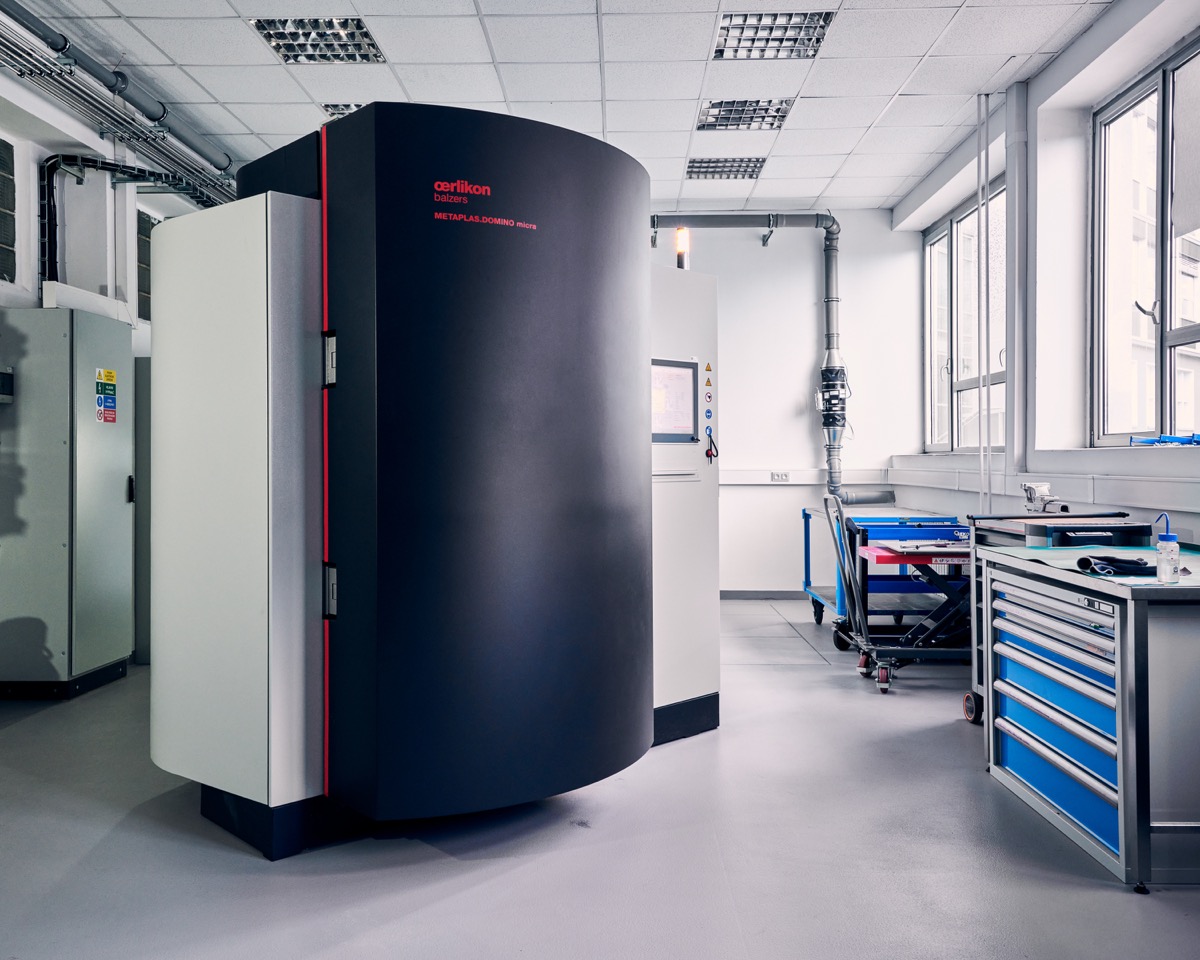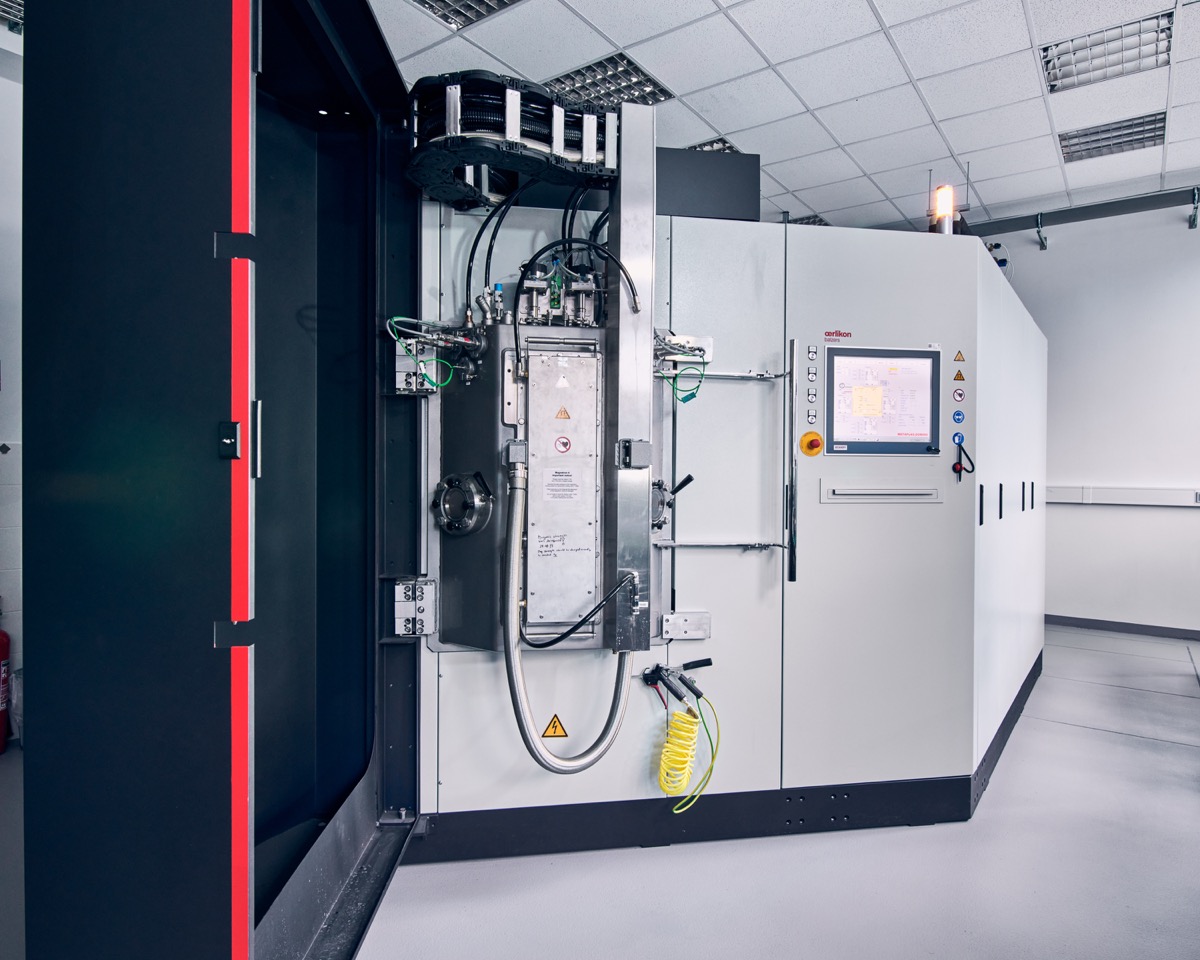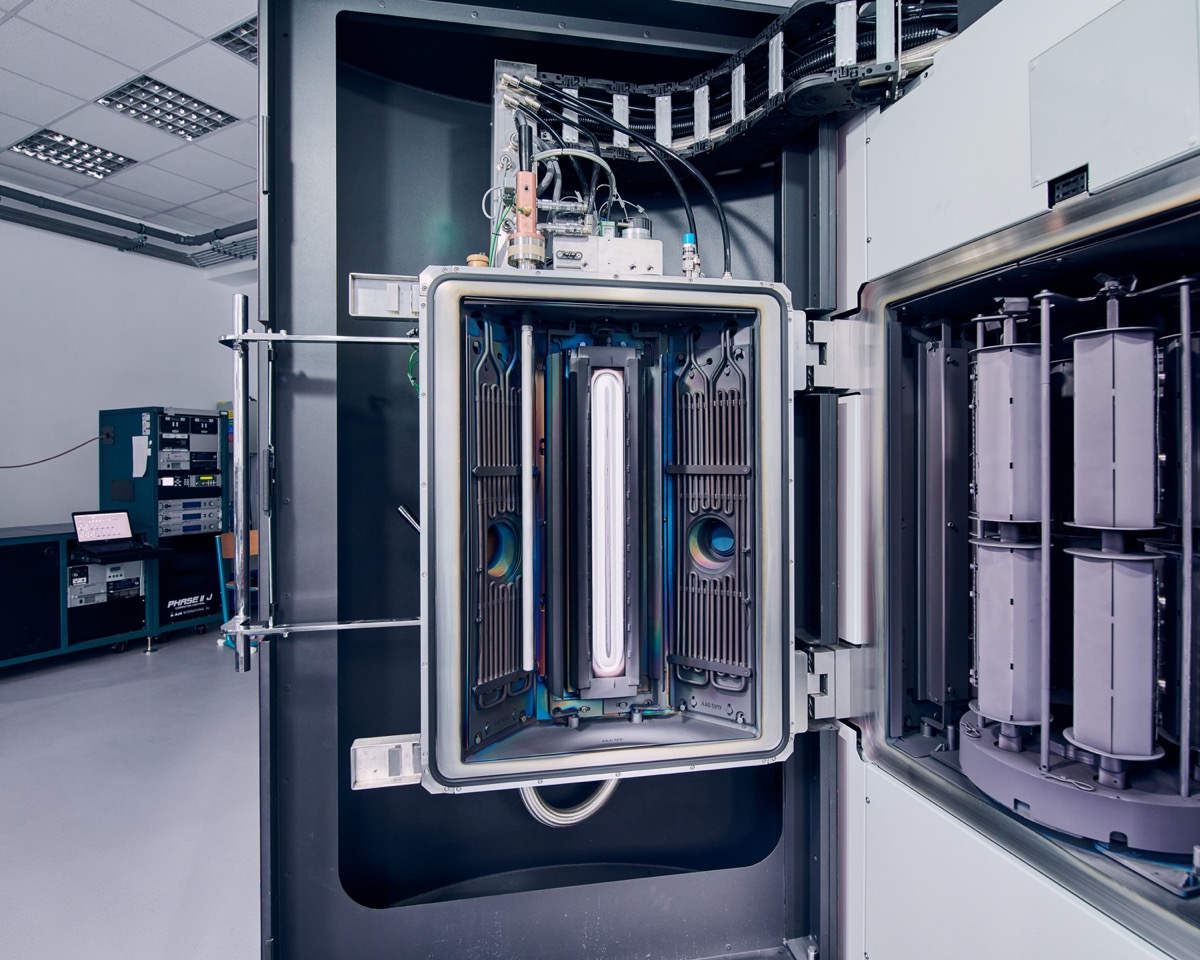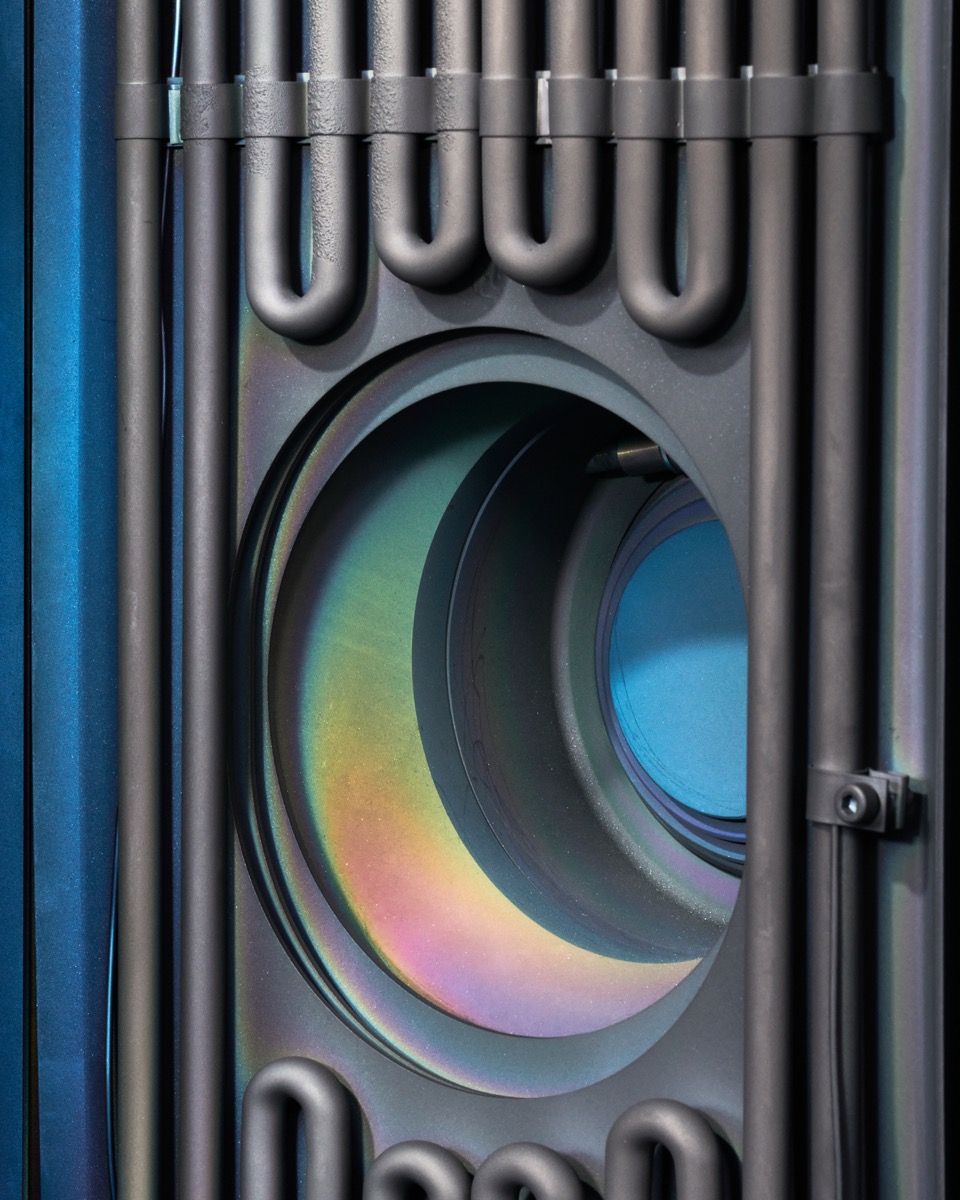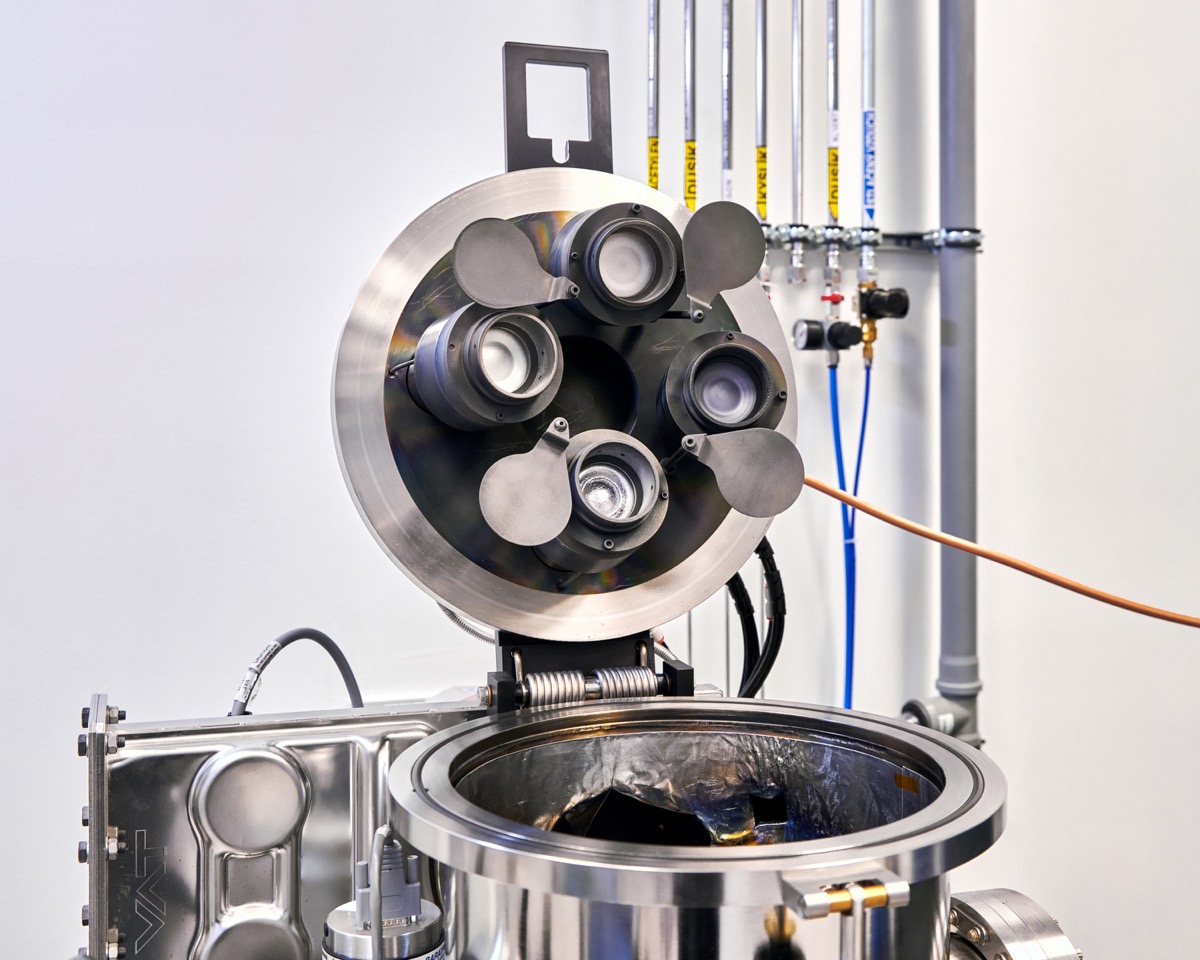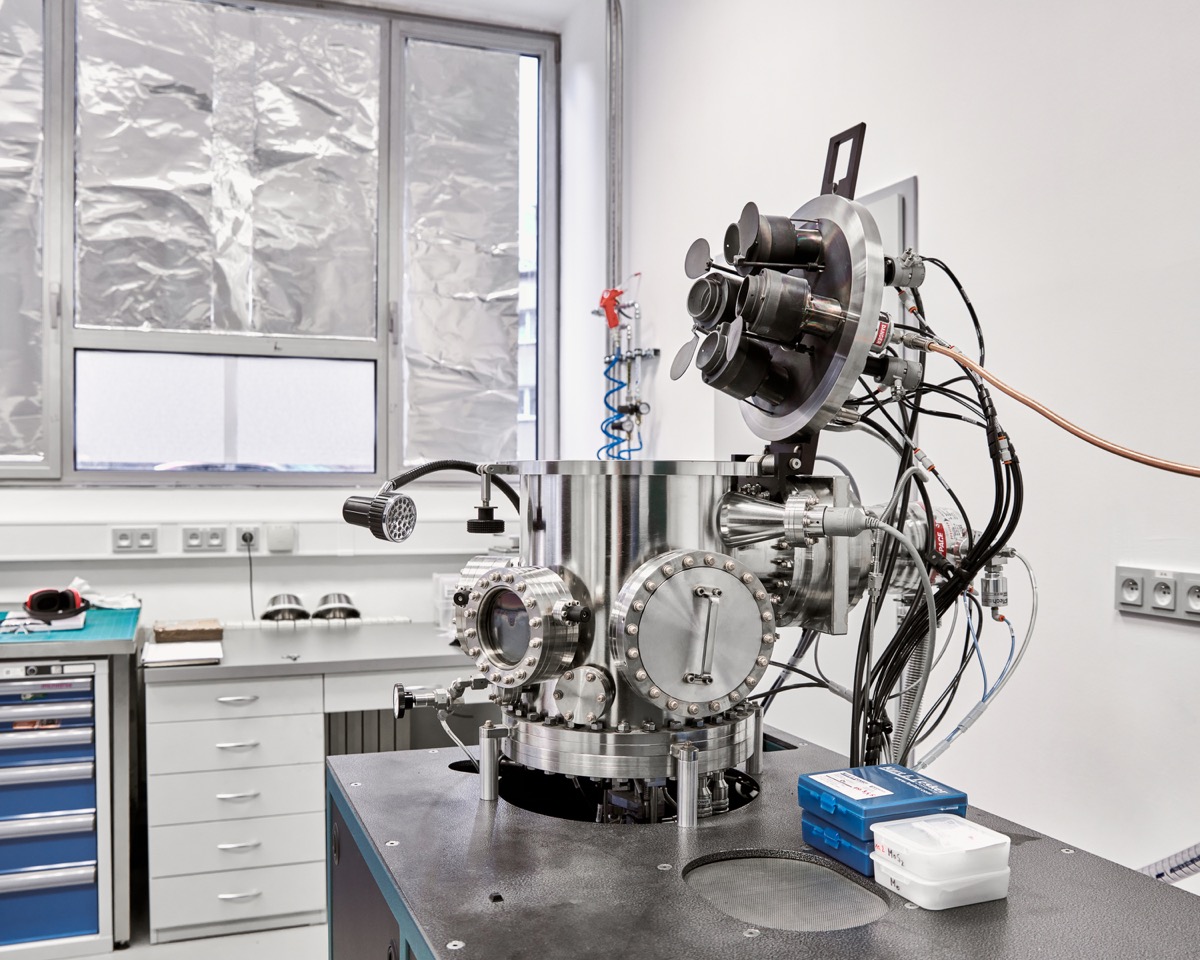A thousand tons by one hand. Nature Materials has published a paper on a “superlubricant”; discovered at the Faculty of Electrical Engineering
An international team led by the Advanced Materials Group at the Department of Control Engineering at the Faculty of Electrical Engineering (Mengzhou Liao, Paolo Nicolini, Victor Claerbout, Tomáš Polcar) has taken advantage of the unique properties of so-called two-dimensional materials and measured the lowest coefficient of friction to date: one millionth. With such low friction, it would theoretically be possible to move an object weighing a thousand tonnes with just one hand. The work was published in the prestigious Nature Materials journal in January 2022.
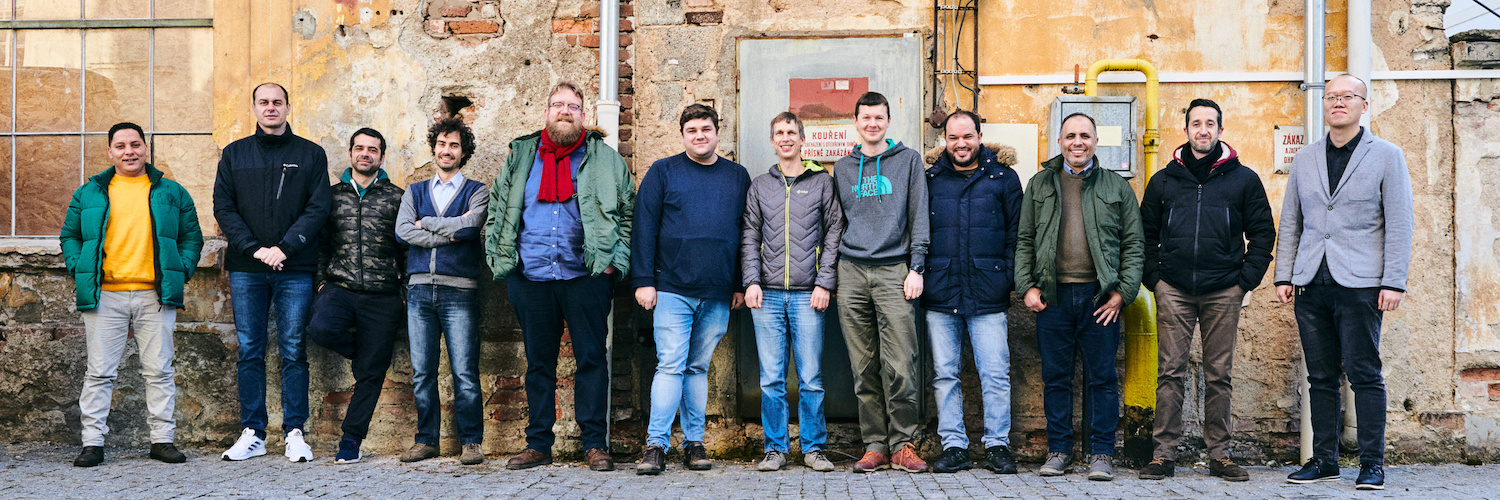
Advanced Materials Group.
Friction is the main cause of energy loss and wear in all mechanical devices. From an economic point of view, frictional losses can amount on average to 5% of GDP, with 20% of the total energy wasted in overcoming friction. Liquid lubricants are normally used to reduce friction, but these are not suitable or economically viable for all applications. Therefore, an international team led by the Advanced Materials Group at the Department of Control Engineering at the CTU FEE has long been engaged in the search for so-called superlubricants - solid materials whose coefficient of friction is theoretically close to zero.
Two-dimensional materials as superlubricant
„Friction is the dissipation of useful energy into energy loss (typically heat), which is often associated with damage to the material and abrasion. Friction, unlike many physical phenomena, is commonly familiar. We estimate it subconsciously, for example when we pick up a glass, and we can even influence it, for example by salivating our fingers when turning pages,“ explains Professor Tomáš Polcar, Head of the Advanced Materials Group. „So we asked the question: What is the lowest possible friction? Can we prepare a material combination where friction is almost zero?“ A team of international scientists found the answer in so-called two-dimensional materials made up of layers of molybdenum sulphide, graphene or boron nitride.
Friction at the edge – a discovery published in Nature Materials
In their latest work, an international team led by the Advanced Materials Group comprising Mengzhou Liao, Paolo Nicolini, Victor Claerbout and Tomas Polcar took advantage of the unique properties of these two-dimensional materials to measure the lowest coefficient of friction to date: one millionth. In addition, thanks to atomic-scale simulations, the Prague-based scientists were able to determine exactly how much of the resulting friction is influenced by the edges of the two-dimensional materials and their topology.
The work was published in the January issue of Nature Materials*, and an accompanying review article praised the elegance and cleverness of the experimental method used. This is the first ever article by CTU FEE in a journal with an impact factor of over 40 and also the first article in Nature Materials where the Czech republic has the first author.
Move a thousand tonnes with one hand
“Our chosen combination of materials with a large difference in lattice constant, such as MoS2 vs. graphene, ensures low friction independent of the direction of motion. This has so far been the main obstacle on the road to superlubricity,” continues Tomas Polcar, adding: “With such low friction, we could theoretically move an object weighing a thousand tonnes by hand.”
Now the authors of the paper are trying to transfer 2D materials to practical applications such as linear feeds used in robotics. Thanks to strong demand from industry, superlubricity research is currently a very hot field where further breakthroughs are expected, according to the Nature reviewers.
* Liao, M., Nicolini, P., Du, L. et al. UItra-low friction and edge-pinning effect in large-lattice-mismatch van der Waals heterostructures. Nat. Mater. 21, 47–53 (2022)





